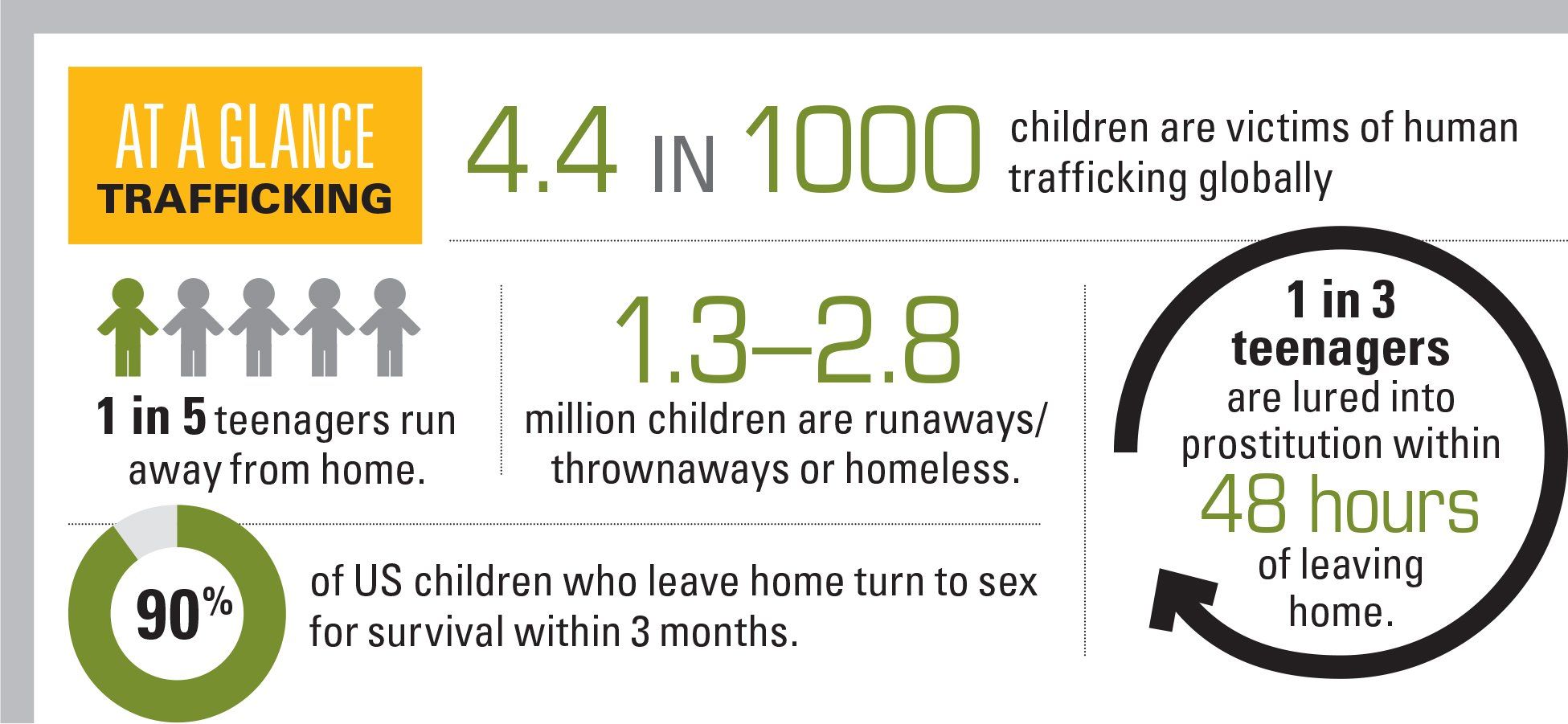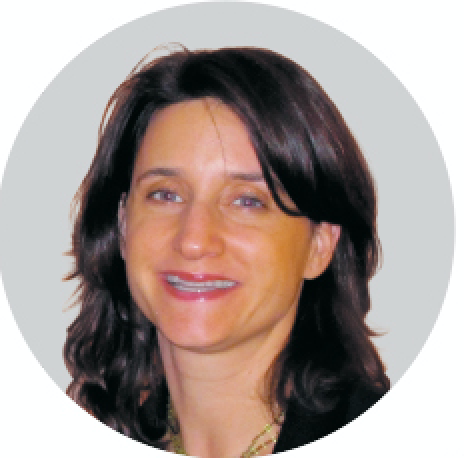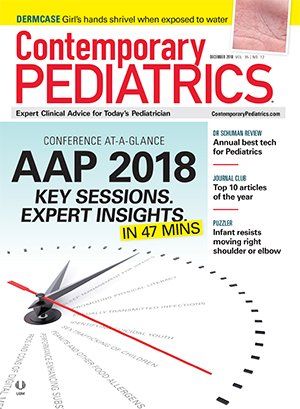Identify, screen, treat, and advocate for child victims of sex trafficking
At a glance: Trafficking

Amy P Goldberg, MD, FAAP

Human trafficking is a national and global problem involving millions of children, many of whom are the victims of commercial sexual exploitation. Globally, 4.4 in 1000 children are victims of human trafficking, with more than 1 million children victims of commercial sexual exploitation in 2017. In the United States, it is estimated that 244,000 children are at risk for commercial sexual exploitation each year.
“Human trafficking is a public health problem of global magnitude,” says Tania Condurache, MD, MSc, associate professor of Pediatrics, Department of Pediatrics, University of Louisville School of Medicine, Louisville, Kentucky. “Pediatric victims of exploitation are at risk for considerable physical and mental health problems that can affect them throughout their lives.”
Condurache spoke about these problems, along with the role pediatricians can play in screening for and identifying children who are victims of human trafficking and providing medical treatments for common morbidities found among these victims, during a session titled “Modern day slavery: Local and global perspectives on human trafficking” at the American Academy of Pediatrics (AAP) 2018 National Conference and Exhibition in Orlando, Florida, on November 3.
To help identify children at risk of becoming victims of human trafficking, Condurache discussed a number of factors: runaway/thrownaway and homeless youth; children within the foster care system; those with histories of abuse/neglect; those with histories of substance misuse; children with disabilities; youth in the juvenile justice system; LGBTQ youth; and refugees/immigrants/ethnically marginalized children, especially those who don’t speak English.
For example, in the United States, she cited statistics showing that 1 in 5 teenagers run away from home; 1.3 to 2.8 million children are runaways/thrownaways or homeless; and that 1 in 3 teenagers are lured into prostitution within 48 hours of leaving home. Within 3 months of being away from home, 90% of US children will turn to sex for survival.
Other risk factors include family dysfunction, domestic violence, and financial struggles. Community risk factors include peer pressure, social isolation, gang involvement, high-crime neighborhoods, and poverty.
She also emphasized the types of human trafficking, including commercial sexual exploitation, forced marriages, forced labor, forced begging, child soldiers, selling children, and removal of organs.
Children who become victims of human trafficking face multiple physical and mental healthcare issues, including injuries, infectious diseases, malnutrition, dental problems, skin diseases, untreated chronic conditions, reproductive health problems, substance use/misuse, complex trauma, depression/anxiety, suicide, and self-injurious behaviors.
How to identify the victims
What is the role of pediatricians in helping these children? Condurache provided a number of red flags that can alert the clinician that a child may be a victim, including physical signs of abuse (bruises, black eyes, burns, cuts, broken bones/teeth, multiple scars); branding/tattoos; prolonged untreated infection; and poor hygiene. Among the psychologic indicators are children who are overly submissive, hypervigilant, or paranoid; those who exhibit an oversexualized demeanor and behaviors; those who are socially withdrawn attributed to fear of stigmatization; and those who lack life skills.
Important in the assessment of a such a child, Condurache said, is to first establish trust and allow the child to choose a male or female provider. She also emphasized the need to use multidisciplinary resources such as social workers and psychiatrists, and recommended contacting the National Human Trafficking Resource Center (NHTRC) hotline (888-373-7888) to get help in conducting an assessment and how to determine the next steps.
“Pediatricians are in a unique position to identify potential victims of human trafficking and employ multidisciplinary medical and nonmedical resources for their treatment and rehabilitation,” she said.
Once a child is identified, a medical evaluation should include assessment and treatment of acute and chronic medical conditions; a dental health evaluation; a sexual assault response team; documentation of acute/remote injuries to the genital and extragenital areas; assessment of nutritional status and hydration; a mental health evaluation; and treatment.
Another key role for pediatricians, Condurache emphasized, is to help these children rehabilitate back to society by providing resources for services that include physical needs (clothing, housing); emotional and psychological support; and legal help and services. This process also includes advocacy to ensure these children receive the comprehensive support they need.
“Pediatricians should advocate for easily accessible, victim-centered, culturally appropriate medical homes for trafficked persons in the United States and abroad,” Condurache said. “They should also raise awareness about human trafficking among their patients and their families through anticipatory guidance and screening questions during their regular visits.”
Condurache ended her talk by providing resources for pediatricians to report suspected sexual exploitation of minors to the appropriate authorities.
Commentary
The commercial sexual exploitation of children (CSEC) is a subset of human trafficking and a severe manifestation of sexual abuse that has become an increasingly recognized health issue. The term CSEC is defined as a minor (aged younger than 18 years) who exchanges sexual acts such as survival sex and stripping for remuneration in the form of money, shelter, drugs, or other valued entities.
Our child abuse pediatric clinic has evaluated more than 80 patients who are referred for concern of sex trafficking involvement. Many of our patients have complex medical and psychiatric needs (eg, sexually transmitted infections, suicidal ideation), and frequently present prior to the provider’s understanding their involvement. These medical visits represent opportunities for disclosure and intervention.
We found that more than one-fourth of the presenting concerns during previous medical visits were related to psychiatric issues, strengthening the association between CSEC and mental health problems. Patients seeking medical attention often are not identified because of the lack of provider awareness, and because victims infrequently self-disclose involvement and do not consistently present with evidence of CSEC engagement (eg, found trafficking by law enforcement).
We have identified risk factors that may make youth vulnerable to exploitation (eg, history of sexual abuse) and factors that are consequences of involvement (eg, physical injuries). We see indicators such as runaway behavior, substance abuse, and psychiatric illness as risk factors for and consequences of victimization.
When a patient presents with these problems, pediatricians should have a conversation about potential CSEC involvement. Pediatricians have the opportunity to begin with a general discussion, focusing on the patient’s knowledge about sex trafficking, progressively asking more questions after affirmations from the patient. This funnel approach may be effective in diminishing discomfort, shame, and guilt, thereby providing a safe environment for disclosure.
Engaging in an open, nonjudgmental conversation with youth pertaining to specific issues relevant to the patient demonstrates that the pediatrician is trusted, open-minded, and professional, with the patient’s health and safety as the priority. A medical home can then be established through follow-up visits and collaboration with other community professionals to care for the multifaceted needs of these youth.
Amy P. Goldberg, MD, FAAP, is associate professor of Pediatrics, Warren Alpert Medical School of Brown University, Lawrence A. Aubin Sr. Child Protection Center, Hasbro Children’s Hospital, Providence, Rhode Island.

Having "the talk" with teen patients
June 17th 2022A visit with a pediatric clinician is an ideal time to ensure that a teenager knows the correct information, has the opportunity to make certain contraceptive choices, and instill the knowledge that the pediatric office is a safe place to come for help.
Meet the Board: Vivian P. Hernandez-Trujillo, MD, FAAP, FAAAAI, FACAAI
May 20th 2022Contemporary Pediatrics sat down with one of our newest editorial advisory board members: Vivian P. Hernandez-Trujillo, MD, FAAP, FAAAAI, FACAAI to discuss what led to her career in medicine and what she thinks the future holds for pediatrics.